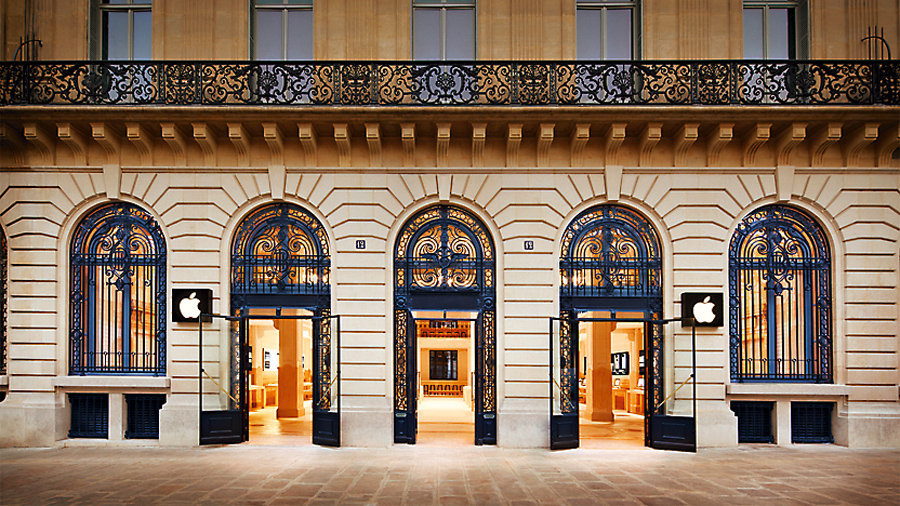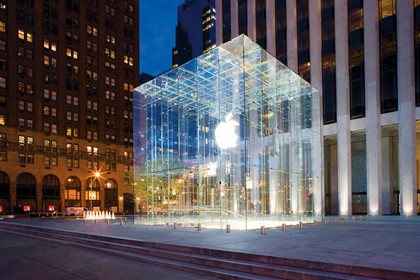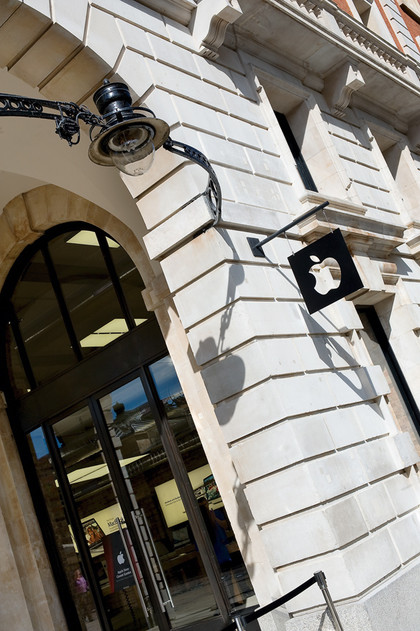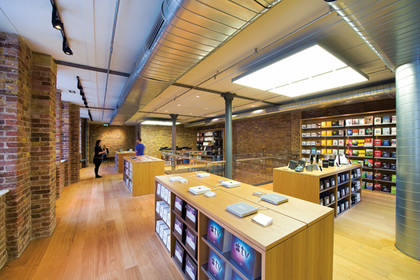How Apple became a retail giant
In just over a decade, Apple Stores have become regular features in our cities

The first Apple Store opened in 2001. In fact, two of them were opened on the same day in two different locations: Tysons Corner in Virginia and Glendale in California.
These first two stores were small, especially compared to today's flagship stores in key locations such as Manhattan, Sydney, Tokyo and London, but they contained the seed of an idea that would later find fruition in more than 300 stores worldwide, culminating last year in the biggest Apple Store to date: London's Covent Garden store.
In fact, Apple Stores are springing up so quickly that store number 346 was opened as we were writing, and by the time this magazine is on sale there are sure to be more.
The Apple Store was the brainchild of Ron Johnson, Apple's Vice President of Retail. From the start, he had a focused vision of what an Apple retail experience should be: open, airy surroundings, the Genius Bar, the mix of glass windows and wooden desks and the attitude to sales that let the products do the talking.
Johnson joined Apple in 2000 from his previous position of Vice President of Merchandising at Target Stores. In typical Apple style, his initial work on a retail store for Apple was kept secret, in case it tipped off competitors. In fact, his name wasn't even mentioned within the company, so it wasn't until the official announcement of the first Apple Store in Virginia that the majority of people within Apple found out his real name.
Initial press reaction to the concept of an Apple Store was negative. "I don't think we convinced one person at the time," he said as part of his acceptance speech on behalf of Apple for the Award of Excellence from the Success for Design Conference in 2004 - and yet Apple proved everybody wrong, again.
Whatever magic formula makes up Apple's retail experience, it certainly works. Very quickly the number of Apple Stores in the US ballooned until, nine years later, it reached the staggering 243 stores we have today.
Sign up for breaking news, reviews, opinion, top tech deals, and more.
Of course, Apple didn't simply stop at the borders to its home nation - Apple Stores can now be found in 11 countries worldwide, and are spreading into more all the time.
Local flavour

Perhaps the key to its success is that an Apple Store is a place where you can not only learn about Apple products, but you can actually try them out, and get help if you're having problems.
The Apple kit is presented beautifully on desks throughout the store for you to play with to your heart's content, without getting disapproving looks from the staff. Of course, you're likely to be approached by a sales assistant wearing an Apple T-shirt fairly quickly when you enter the store, but they're normally just happy to chat about the products, rather than give you the hard sell.
In addition, the Apple Store is more than just a shop - you can also get training in all the latest Apple applications, check into the Genius Bar to get help with any problems you have, or be entertained by celebrities and musicians at a live event. Don't forget that Apple Stores have free public Wi-Fi too, so it's a great place to check email.
Whatever country you're in, you always know you're in an Apple Store - it's just so unmistakably Apple. But long-term Apple watchers are starting to notice a few differences to the usual store layout of late. All the familiar elements - glass staircase, wooden desks - are there, but things are starting to change in Apple land.
The Covent Garden Store is a prime example and one which set the trend. It's actually one of four stores that Apple opened around the same time, including two in Paris (Louvre and Opéra) and one in Shanghai, China, that started to break the mould.
To be sure, these stores still have that unmistakable Apple feel, but rather than making each store an identikit clone of the last, Apple is now adding a bit of local flavour to proceedings. For example, both the Opéra and Covent Garden stores have retained as much of their building's original architecture as possible, and has seen them restored to their original 19th-century splendour.
Adding value

"Over the last ten years we've learned a lot," said Johnson, speaking at the opening of the Covent Garden Store in August 2010. "It turns out that our most significant stores, what people would call 'flagship stores', are our best stores. They're our highest profit and highest traffic stores as well, so we love building these significant stores."
You might be surprised to learn that the Regent Street store is Apple's busiest in the world, with even more visitors than the more visually impressive store on 5th Avenue. It seems that big stores work, and so does making those stores distinctive and unique.
In the future, it looks like Apple's focus will be on bigger stores and on making each one special, following that trend. Covent Garden, for instance, is one of the premier tourist destinations in the West End, making it the perfect spot for a flagship Apple Store.
Occupying a Grade II listed building on the Piazza, it's a visual delight for anyone - not just Apple fans - in combining architectural work from the 1870s with Apple's hyper-modern approach to design, including the famous glass staircase, of course. In fact, this store has two of them - a spiral staircase at the front and one at the rear enabling access to two more floors.
The most notable architectural feature of the store has to be the series of arches that run around the outside. Inside the Covent Garden store you'll find more arches; they're all over the place, and they help to form the creation of individual rooms for each product line - Mac, iPhone, iPad and iPod.

Every original building material amenable to restoration has been given the full treatment, giving the whole space a wonderfully 'olde worlde' feel as you wander beneath beautiful brick arches and between traditional English oak desks. As you walk through the store's door you enter the world of Mac; and beyond that is an impressive iPad courtyard where natural daylight streams in through a huge glass ceiling. It's at this point that the sheer size of the building really hits you: according to Apple, you could easily fit the entire Manhattan Apple Store inside this courtyard area.
Tucked away in the back is the iPod room and up a floor is a now-standard feature introduced with the the store's opening: a Setup room, to which you can retire immediately after making your new Apple purchase. Here you can set up your email on your new MacBook, activate your new iPhone or choose your favourite iPad wallpaper, all with a degree of privacy, away from other shoppers.
Also on the second floor you'll find the Community room packed with One to One training desks, and a new Pro Labs area for training in the more professional Apple applications, such as Final Cut Pro. Around the corner you'll find a huge Genius Bar, shielded off in its own room so you don't get distracted by the noise of other shoppers.
Finally, the entire third floor is given over to the biggest range of accessories of any Apple Store to date: cases, speaker docks, laptop bags - they're all here. "It's in many ways the best thing we've done so far, because it's got all of our thinking in it, from the 299 steps that precede it," said Ron Johnson at its launch.
He's right - the Covent Garden Apple Store is a beautifully restored building in a great location, and well worth a visit.
- 1
- 2
Current page: The art of the Apple Store: small beginnings
Next Page The art of the Apple Store: special stores
Graham is the Senior Editor for AI at TechRadar. With over 25 years of experience in both online and print journalism, Graham has worked for various market-leading tech brands including Computeractive, PC Pro, iMore, MacFormat, Mac|Life, Maximum PC, and more. He specializes in reporting on everything to do with AI and has appeared on BBC TV shows like BBC One Breakfast and on Radio 4 commenting on the latest trends in tech. Graham has an honors degree in Computer Science and spends his spare time podcasting and blogging.